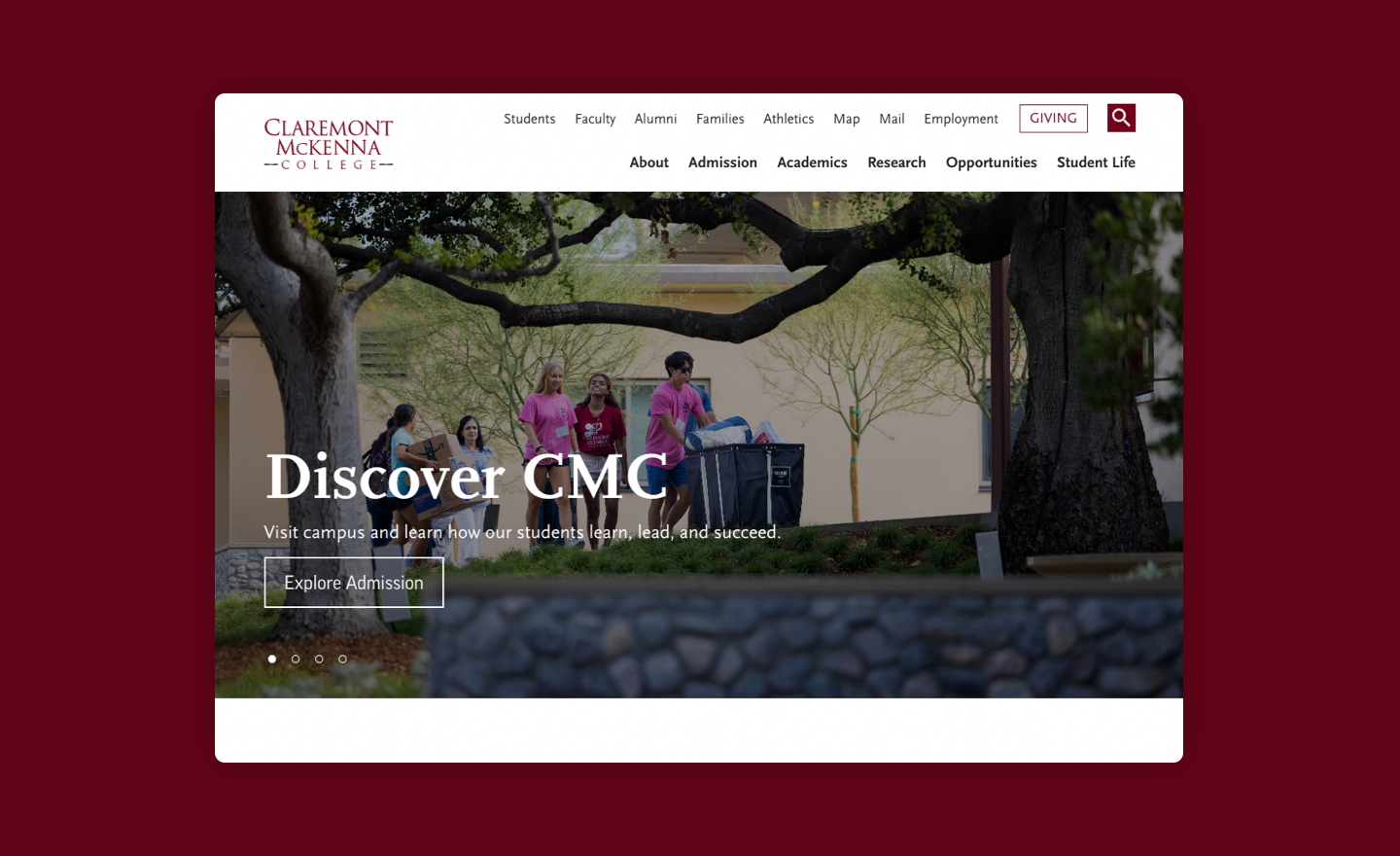How to Maximize Your Higher Ed Website’s Impact on Student Admissions
It can be difficult to get your higher ed website to actually function as the optimal student recruitment tool it needs to be. That’s particularly true for institutions that have cobbled together multiple technologies and platforms rather than building an integrated solution from the ground up.
You understandably want to use every tool at your disposal to meet enrollment targets. But while each disparate tool might provide helpful capabilities that support internal stakeholders and accomplish key marketing objectives, the overall user experience often suffers. That in turn makes it harder for students to discover what they need to know and puts your college or university back at square one.
There is a better way.
Unraveling a higher ed website’s many complexities is no easy feat. But by choosing a flexible CMS like Drupal — and by partnering with web developers who understand the unique challenges higher ed marketers face — you can create a digital experience that will move your Admissions needle now and in the future. Here are three critical steps to take.
1. Understand What Prospective Students Need From Your Website
Whether you want to optimize your existing higher ed website or design a new experience from scratch, taking time to understand what students need from you is foundational to achieving your overarching goals.
This starts by listing what students might be looking for in their search process and then laddering up your website’s capabilities to address each one.
Student Decision Funnel Stage: Awareness
In the initial leg of their search process, prospective students are looking to check off the most basic criteria. They may be unfamiliar with your college or university. And that means your website needs to perform well from an SEO perspective in order to stand a chance of rising to the top of a student’s search process.

| WHAT STUDENTS ARE DOING | WHAT YOUR WEBSITE NEEDS TO DO |
|
Exploring your site, asking questions like:
|
|
Student Decision Funnel Stage: Conversion
In this stage, your prospective students feel good about what your institution has to offer and are ready to take the necessary steps to apply.
| WHAT STUDENTS ARE DOING | WHAT YOUR WEBSITE NEEDS TO DO |
|
|
Student Decision Funnel Stage: Adoption
Submitting an application and being accepted aren’t the end of the journey for the student or their interactions. And there’s more your website needs to do in order to convince them to enroll.
| WHAT STUDENTS ARE DOING | WHAT YOUR WEBSITE NEEDS TO DO |
|
|
Applying the Student Decision Funnel Using Drupal CMS
Conducting journey mapping exercises like the one above — and gathering quantitative and qualitative research along the way — will help you uncover information gaps and navigational stumbling blocks that hinder student progress. From there, you can make smart decisions about the best ways to improve your website, from information architecture to content strategy.
Drupal can support all the marketing needs listed in the “What Your Website Needs to Do” columns. To help you visualize what’s possible, take a look at a few things we have worked on:
- The interactive program finder we built for the University of California at Santa Cruz, which allows students to scroll through the various majors and minors or search by keyword
- Evergreen Valley College’s guided pathways approach, which enables prospective students to explore their site based on the particular objectives they’re trying to achieve (e.g. enter the workforce or add specific skills)
- The storytelling and on-brand design employed by Stan State, which entices prospective students with eye-catching pull-out quotes, photos, videos, and microscopy
Keep in mind that the savviest marketing leaders don’t stop after four stages of the funnel we’ve covered above. They also think through what it takes to foster use, loyalty, and advocacy. ImageX can help you shape your entire funnel holistically, starting with an in-depth discovery process and continuing with each part of the web dev engagement.
2. Design an Optimized, Student-Focused Content Strategy
If you’re like most colleges and universities we work with, your number one challenge is content. And though we could wax eloquent about all the reasons why your content might feel unmanageable, it comes down to one simple problem: there’s just too much of it.
As counterintuitive as it might feel, culling your existing content and developing strong governance habits are essential to lead more students through the decision funnel.
In particular, consider:
- Your content structure and navigation. Is your information architecture intuitive and easy to follow? Does your content flow logically?
- Keywords and SEO. Are you performing keyword research to better understand what your audience is searching for? And are you using these findings to inform your content strategy?
- The story you’re telling through text, videos, and images. Is content vibrant and inclusive? Can students picture themselves going to class, participating in an event, or interacting with faculty?
- Personalization. Is your CMS delivering a custom experience based on what students look at? And does it offer up associated content in a way that sparks continued exploration?
- Accessibility. Are you meeting or exceeding the minimum standards of accessibility? Are there long walls of text that should be replaced with content that’s scannable and readable for both humans and e-readers?
Managing Content With Drupal
This is where your choice of CMS makes all the difference. A flexible and adaptable CMS like Drupal allows you to create and manage everything from your homepage to campaign-specific landing pages with ease.
For example, with Drupal’s drag-and-drop design tool, Layout Builder, you can control how content is displayed, set and override layout defaults, and arrange each page as you see fit. Meanwhile, Drupal’s flexbox capability stretches or contracts each component based on how much content you’re working with — which means your layout will flow beautifully without you having to worry about a single spec.
Furthermore, you can empower content creators and editors across the institution to manage their varied content needs while staying within the governance parameters you establish.

We helped Claremont McKenna College migrate their Drupal site, along with custom features and modules.
3. Engage a Web Dev Partner That Understands Your Unique Higher Ed Needs
If you’re serious about making your website the effective marketing tool it can be, the most important step you can take is to decide not to go it alone. Specifically, you need an agency partner who “gets it” and has a proven track record of helping colleges and universities succeed. And since the higher ed marketing landscape will only continue to evolve, you also need a CMS that will grow with and adapt to your requirements.
ImageX has leveraged Drupal’s flexibility, extensibility, and scalability to create custom solutions for higher ed clients of all sizes and types. We invite you to check out examples of our higher ed work to learn more about the types of complex problems we’re able to solve.
Then, when you’re ready to explore what we can do for you, let’s chat.



